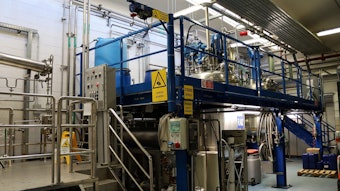The competitive pressures facing consumer product companies in the health and beauty sector not only continue unabated, but continue to grow. As a recent Wall Street Journal article points out, more marketing dollars are shifted toward packaging and point-of-purchase promotions, increasing from $17.6 to $18.6 billion. As more new products are introduced each year, efficiently managing the package-design chain will only grow in importance.
Savvy marketers realize they can gain
key competitive advantages in speeding time-to-market by driving out inefficiencies in the package-design chain, while, at the same time, fostering the innovative packaging that helps build brands.
Implementing a software and hardware suite that manages and integrates the packaging supply chains from ideation to production is a demonstrable way to achieve these goals. An ideal design life-cycle management solution allows consumer product companies, private-label retailers and their graphic communication partners to communicate, collaborate, and execute packaging in the most efficient and innovation-fostering way possible.
As efficient communication and collaboration are obviously good things—and managing the actual production of a package is even better—design life-cycle management means business, literally. Lest you think this is a pie-in-the-sky conceptual artifice, let me give you a very technical example. Software applications are available that contain advanced trapping and ink tools, allowing designers to ascertain that their renderings can actually be printed in the colors they’ve selected. This is no small feat, as it allows potential production problems to be resolved long before a design is sent off to the printing plant, and thus reduce time-to-market and related expenses.
Knowing the challenges that lay ahead in the package design process is paramount. When we consult with potential health and beauty clients, we make it a point to know the terrain and understand their design-chain management issues in the aggregate. How many layers of approval are there in-house? How many brand managers, designers, lawyers, and corporate executives? Outside the company, how many stakeholders exist, such as ad agencies, design firms, prepress, converters, printers, and various suppliers?
Electronic design life-cycle management is all about getting these players on the same page. Considering that 40 or more people have influence and approval on an individual project, getting them on board with one another is half the battle. Supplying the tools to change and collaborate on a design while it’s in process is the other half. Superior design life-cycle management solutions should deliver on both, and foster the innovation that leads to packaging that builds brands and drives sales.
While innovation is a current buzzword that pervades many industries, it is the key competitive advantage—fostering it, speeding its pace, and executing its results translates into better sales, stronger brand equity and repeat business.
An ideal design life-cycle management solution removes time-consuming logistic and business-process steps, essentially minimizing the tedious back-and-forth nature of approvals and revisions. If a major health and beauty product company has the proper communication, collaboration, and execution software platform in place, the people it pays to manage brands and develop sales-driving packaging are freed up to do actually do what they are experts at doing—move product and build brands. Instead of worrying if Hal in legal or Sally in compliance have reviewed and approved new packaging, a brand manager can put her time where it counts.
Take a deep breath and review the past 20 years. Unprecedented liberalization in markets across the global economy have been witnessed: freer trade, lower tariffs, and the rise of widespread economic growth in China and India. Throw in for good measure the march of technology, increased outsourcing, merger-mania—and it’s a dizzying vista indeed.
My point is that companies that are open, flexible and adaptable have not only survived, but thrived, and will continue to do so. The innovators will continue to come out on top. Fostering innovation is no cliché. Quickening its pace and executing its outcomes are a necessity not just to survive, but to thrive.
And in the package-development process, it’s innovation that drives the superior design that moves products off the shelves and into shopping baskets. In other words, health and beauty brand managers can focus more energy on building a powerful brand platform for their specific products, and less energy on building an individual package.
Building the brand and maximizing shelf impact boils down to the consumer standing in a store deciding what to buy. Fostering the necessary innovation to unleash sublime design will be the key competitive advantage. Consumers, after all, don’t see an innovative product on a store shelf—they see the packaging. Clearly, equal focus must be paid to excellence in package design. Design life-cycle management as a comprehensive solution will help CPCs focus their energies where it truly counts.










